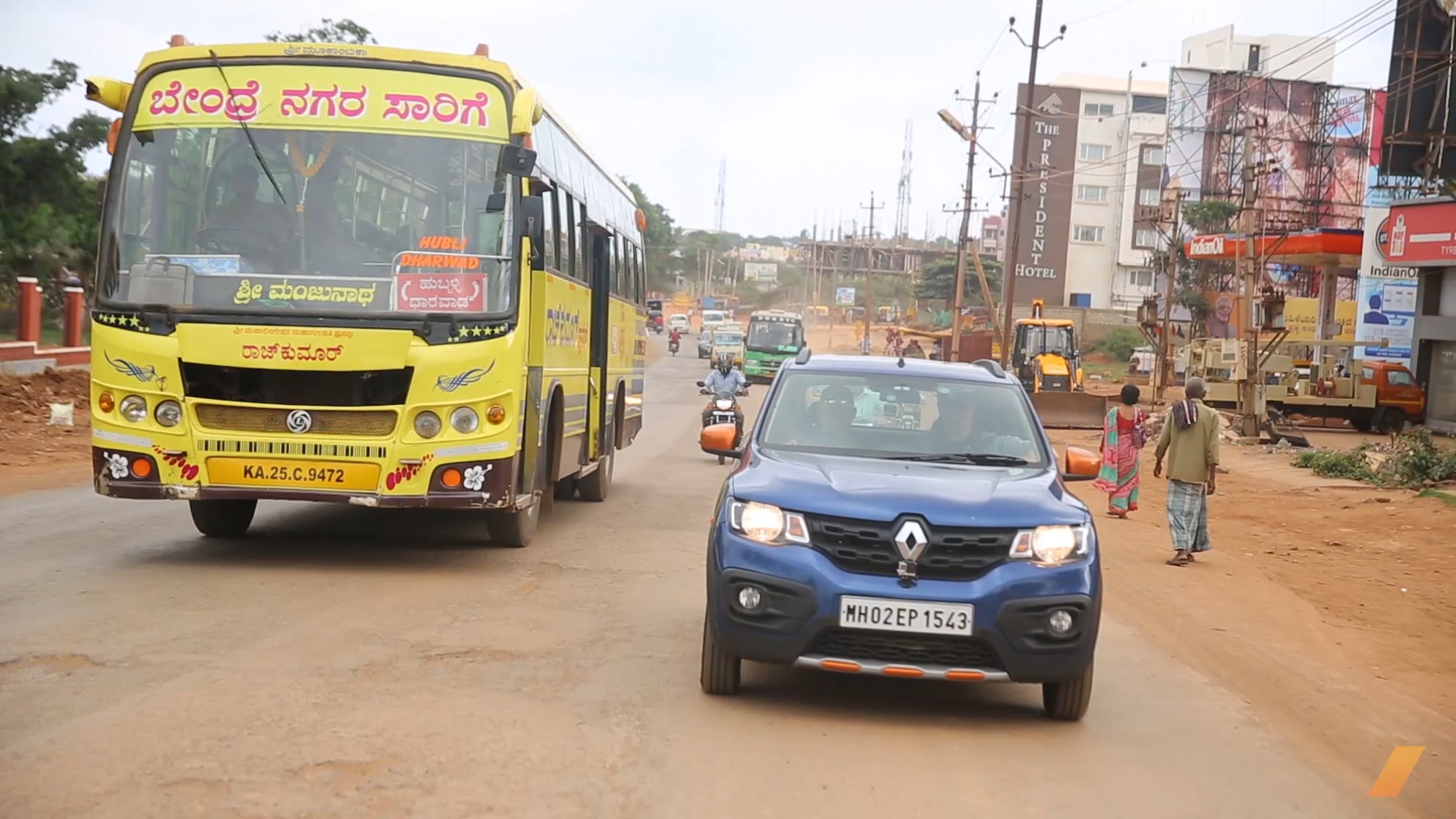

Editor’s Note: In 2017, The Drive‘s own Alex Roy ventured halfway across the world to India to drive a Renault Kwid, a brand-new car with a starting price of about $4,000, across the subcontinent in an attempt to set a Cannonball Record. Along the way, he learned quite a bit about how the subcontinent’s chaotic traffic has its own form of logic—but one that would stump even the smartest self-driving machine.
The following is an excerpt from Roy’s earlier story about this, “Why India Will Tell Us When Self-Driving Cars Will Hit The US.”
You don’t need
to go there to know that driving in India is crazy. Actually, you do. My old friend Jason Torchinsky wrote a wonderful story about his visit I thought would prepare me for my journey.
I was wrong.
When people in Los Angeles, or New York, or London, or Atlanta, or any major city in the western world complain about traffic, they are joking. Unless they were on I-95 trying to escape Hurricane Irma, they know nothing. They’ve never seen traffic.
I would have taken better pictures if my life hadn’t been in danger from the moment we pulled out of the hotel in Chennai. Also in danger? The jobs of the courageous and highly optimistic Renault-Nissan executives who greenlit our journey, which included airfare and the Kwid press car. What were they hoping to accomplish? It certainly wasn’t a driving record, for within minutes of departure we encountered a mass of un-helmeted people on bikes and mopeds in the middle of traffic, ignoring lane discipline, helmet laws and common sense. And yes, that’s a toddler on the front of that motorcycle.

It’s not that there aren’t laws in India. There are. They just aren’t enforced with the regularity common to first world countries. The near total absence of police is surreal. The ubiquity of signs about traffic law and road safety is comic, especially the popularity of signs which appear to be police recruiting posters. Check out this sign at one of the many tolls we encountered:

It clearly indicates all the things one shouldn’t be doing. Based on the locals’ behavior, it would make more sense to triple its size and state “YOU WILL OBSERVE THIS BEHAVIOR—STAY CLEAR OF OTHER MOTORISTS,” which might work if there weren’t so many of them.
Let’s be serious. Population density is so high that no current automatic emergency braking system could possibly work in traffic, because no car equipped with it would ever move. What about blind spot monitoring systems? They’d be lighting up and chiming so much, you’d have to disable them.
Here’s another fun one. There’s a reason no one’s buying that ad space, and it’s not the condition of the sign.

In two days and 1,000+ miles of driving, I didn’t observe a single driver who wouldn’t have been pulled over—if not arrested on the spot—in the United States.
Is there a term for the gap between law and culture? One can’t call a place where laws are ignored lawless. If a behavioral equilibrium renders everyone a criminal, then no one is, and there’s a fundamental disconnect which law alone hasn’t solved, and never will. Enforcement can never match culture to law; it can only tug by threat and whip by penalty. Culture is made up of people, a vast ocean of choices made moment to moment, evolving over many decades.
That Indian roads are more dangerous than America’s is obvious, and beside the point. No government ever eases traffic safety laws. Indian traffic fatalities in 2013 approached 240,000, in a country of 1.3 billion. That’s 16.6 deaths per 100,000 inhabitants per year. For those numbers to go down, people have to have choices that lead to them to safety. In a country where the majority have never owned a car, where two wheelers dominate and road conditions are terrible, getting people into any car will improve overall safety.
Self-driving cars in India? Relative to their population, Indians are just getting started driving cars. Decent human-driven cars like the Renault Kwid have only just become available in recent years, which is why India will soon be the third largest car market in the world. Feeding that growth is a sea of cars whose prices are kept low by a lack of safety hardware common in the west. Airbags? Not mandatory in India. Ultrasonic sensors? The cameras, radar and Lidar necessary for self-driving? Not an option in the fastest growing segment of the market. You can’t put those on a car selling for $20,000, let alone $5,000.
Want more of Alex Roy’s dispatches from India? Click here for the full story excerpted above, or here for his explanation why a $4,000 Renault in India could be one of the most disruptive automobiles of the modern day.